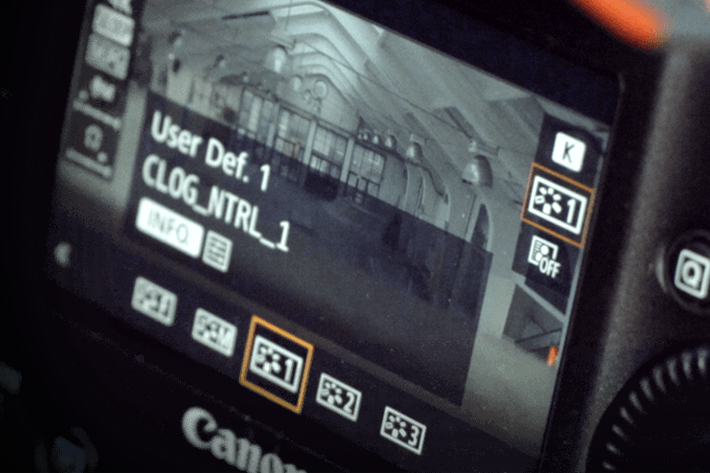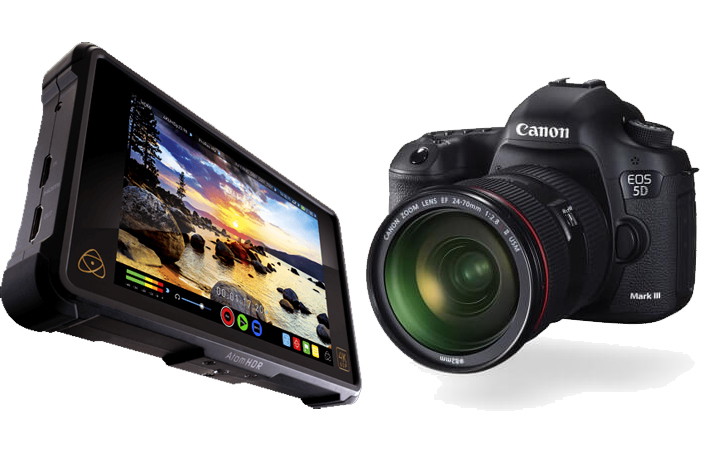
The newly developed C-Log Picture Profiles for Canon DSLR’s gives users an expanded dynamic range at an affordable price, revealing a power “hidden” inside many cameras, even models launched before 2016.
Users of Canon’s EOS 5D Mark III, EOS 1D C, EOS 7D Mark II, EOS 1DX Mark II or EOS 5D Mark IV are now able to tap into the power of High-Dynamic Range, exploring the HDR revolution that is sweeping through the professional video industry and into consumer homes, and which has been triggered by advancements in panel displays and content delivery.
There is one condition to be able to explore the C-Log Picture Profiles for Canon DSLR’s created by James Miller: you’ve to use an Atomos’ AtomHDR monitor-recorder. With it, Canon’s DSLRs mentioned above are now HDR capable. With the expanded dynamic range from the sensor enabled with C-Log, a monitor that enables users to accurately and easily expose for Log in the field is required. The Atomos Inferno and Flame series, with 10.2 stops of dynamic range, a 7″ high bright calibrated screen and patented HDR waveform and slider tools, gives users everything they need to create better HDR and Rec709 imagery.
The HDR revolution is happening and Atomos has been preparing its equipment for it. During 2016, Atomos shipped on camera monitors with 10+ stops dynamic range; HDR content was delivered into the home from Netflix, Amazon and YouTube; and HDR consumer flat panels started shipping.
One interesting aspect many seem to forget is that the power of HDR was already “hidden” inside many cameras, even models launched prior to 2016. In fact, for a long time now that sensors offer the 10+ stops of dynamic range considered as a requisite for HDR, and if users needed it they could use the Log signal processing to capture HDR in the recorded content ready for post-production.
What this means is that older cameras preceding 2016 with Log output are already HDR-ready. There’s no firmware needed or update to pay for. With Log output from the camera you are HDR-ready and just need to partner it with an AtomHDR monitor to accurately expose in real-time for either HDR or SDR in the field. Atomos have worked hard to ensure this is an easy process with patented HDR tools and scopes to ensure users can be confident they have exposed correctly.
But what if your camera doesn’t have Log? Apparently there is a solution. Atomos says that “Canon DSLR’s like the 5D Mark III have been responsible for bringing the 35mm ‘film look’ to the digital world with their large sensors and 24p capability, but don’t have the Log output needed for HDR. Now thanks to our collaboration with James Miller Canon DSLR users can get a Log output and when partnered with an Atomos Inferno or Flame have a formidable HDR combination.”

This means that your 5D Mark III is now HDR! You can monitor and expose perfectly for Log using the AtomHDR engine. With the Expanded Dynamic range of these log curves and the power of ProRes recording direct to affordable media, your Canon DSLR is now back in the game.
James Miller’s Canon DSLR profiles come with a package of LUTs to compliment the log profiles. Miller says: “There are several LOG type profiles for the Canon camera and I first made one 7 years ago. Things have moved on since then, LOG camera profiles have really moved on. I have developed 2 main profiles.”. When it comes to LUTs, the package includes around 120 LUT looks across the camera profiles to download.
When it comes to monitors to use, the choice is ample: Atomos monitor-recorders which are compatible with the C-Log Picture Profiles for Canon DSLR’s include Shogun Inferno, Shogun Flame, Ninja Flame, Ninja Blade.
James Miller’s C-Log package is available at a special discount for Atomos users. Follow the link for more information.

